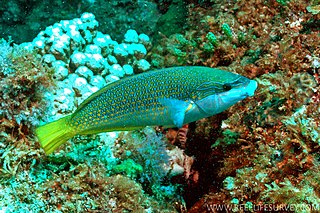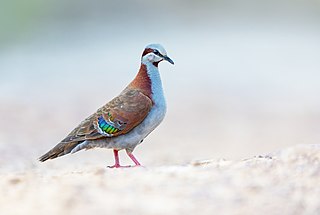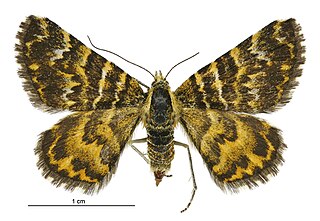Related Research Articles

Caenorhabditis elegans is a free-living transparent nematode about 1 mm in length that lives in temperate soil environments. It is the type species of its genus. The name is a blend of the Greek caeno- (recent), rhabditis (rod-like) and Latin elegans (elegant). In 1900, Maupas initially named it Rhabditides elegans. Osche placed it in the subgenus Caenorhabditis in 1952, and in 1955, Dougherty raised Caenorhabditis to the status of genus.

The New Zealand dollar is the official currency and legal tender of New Zealand, the Cook Islands, Niue, the Ross Dependency, Tokelau, and a British territory, the Pitcairn Islands. Within New Zealand, it is almost always abbreviated with the dollar sign ($). The abbreviations "$NZ" or "NZ$" are sometimes used when necessary to distinguish it from other dollar-denominated currencies.

Sir John Edward Sulston was a British biologist and academic who won the Nobel Prize in Physiology or Medicine for his work on the cell lineage and genome of the worm Caenorhabditis elegans in 2002 with his colleagues Sydney Brenner and Robert Horvitz at the MRC Laboratory of Molecular Biology. He was a leader in human genome research and Chair of the Institute for Science, Ethics and Innovation at the University of Manchester. Sulston was in favour of science in the public interest, such as free public access of scientific information and against the patenting of genes and the privatisation of genetic technologies.

The crimson rosella is a parrot native to eastern and south eastern Australia which has been introduced to New Zealand and Norfolk Island. It is commonly found in, but not restricted to, mountain forests and gardens. The species as it now stands has subsumed two former separate species, the yellow rosella and the Adelaide rosella. Molecular studies show one of the three red-coloured races, P. e. nigrescens, is genetically more distinct.

Rosellas are in a genus that consists of six species and nineteen subspecies. These colourful parrots from Australia are in the genus Platycercus. Platycercus means "broad-tailed" or "flat-tailed", reflecting a feature common to the rosellas and other members of the broad-tailed parrot tribe. Their diet is mainly seeds and fruit.

The Auckland green gecko is a species of gecko found only in the northern half of the North Island of New Zealand, except north of Whangaroa. The Wellington green gecko, formerly considered a subspecies, is found in the southern half of the North Island. The ranges overlap in places through the central North Island and hybrids may occur. Its length is up to 145 mm, snout to vent.
A. elegans may refer to:

The elegant wrasse, Anampses elegans, is a species of wrasse native to the Pacific Ocean from Australia and New Zealand eastward to Easter Island. This species prefers lagoons and can also be found on coastal reefs at depths from 2 to 35 m. This species can reach a length of 29 cm (11 in). It can be found in the aquarium trade.

The brush bronzewing is a species of bird in the pigeon family, Columbidae. It is endemic to Australia, with two biogeographically distinct subspecies.

Compsocidae is a family of Psocodea belonging to the suborder Troctomorpha. The family comprises two extant species in two genera, both found in Mesoamerica. Compsocus elegans is found in Mexico and Central America, while Electrentomopsis variegata is found in Mexico. The antennae of each species have 13 or 14 segments. Two extinct genera, Burmacompsocus and Paraelectrentomopsis are known from the Cenomanian aged Burmese amber of Myanmar and Albian aged Spanish amber.

The green blotched moth is a moth of the family Noctuidae. It is found in New South Wales, Norfolk Island, Queensland, South Australia, Victoria, Western Australia and New Zealand.
Calliscelio is a parasitoid wasp genus which contains two species, C. elegans and C. teleogrylli.

Deinacrida elegans is a species of wētā in family Anostostomatidae. It is endemic to New Zealand.
Aquamortierella is a fungal genus in the Mortierellaceae family of the Zygomycota. The genus is monotypic, containing the single species Aquamortierella elegans, found in New Zealand and Japan.
C. elegans most commonly refers to the model round worm Caenorhabditis elegans. It may also refer to any of the species below. They are listed, first in taxonomic order and, second, alphabetically.

The subantarctic shearwater is a small bird species which breeds in Tristan da Cunha, islands of the southern Indian Ocean and New Zealand Subantarctic Islands.
Arenodosaria is an extinct genus of foraminiferans. The species are known from the Miocene of New Zealand.

Notoreas elegans is a species of moth in the family Geometridae, endemic to New Zealand. This species has a wide distribution in New Zealand and is therefore regarded as not being in need of conservation.
Hilarempis is a genus of flies in the family Empididae.

Onoba elegans is a species of marine gastropod mollusc in the family Rissoidae. First described by Winston Ponder in 1965, it is endemic to the waters of New Zealand.
References
- ↑ New Zealand fungi. 10. Acrogenotheca elegans. S. J. Hughes; New Zealand Journal of Botany, Volume 5, Issue 4, 1967, pages 504-518, doi : 10.1080/0028825X.1967.10428770